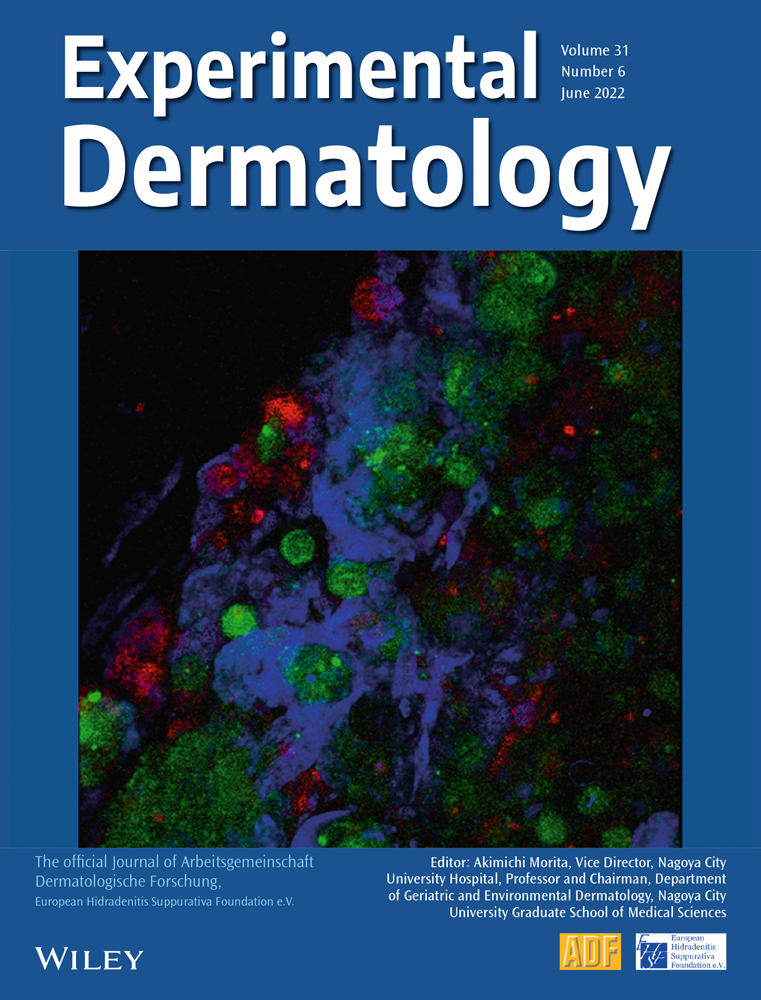Programmed gene expression change in mouse skin after ultraviolet radiation damage
Kaibin Yang, Shiting Song and Yafei Zhang contributed equally to this work.
Funding information
This work was supported by the National Natural Science Foundation of China (NSFC grant number 31871468 to Z.Y.), and Shenzhen University Development Fund
Abstract
Ultraviolet (UV) radiation is a major cause of skin damage and carcinogenesis. Here, we systematically analyse the acute gene expression change in skin in vivo after UV exposure, aiming to establish the common C57BL/6 mouse strain as a convenient model for future pathological research and drug discovery. The back fur of C57BL/6 mice was depilated, and a mixed UV light source was used to irradiate the skin. Full-thickness skin samples were collected at 0, 0.5, 2, 6, 12 and 24 h. Total RNAs were extracted and subjected to RNA sequencing analysis. We found that the gene expression change in mouse skin is highly similar to previous reports in human skin. These include down-regulation of differentiation-related genes and extracellular matrix genes, and up-regulation of cytokine/chemokine genes. An early wave of activator protein 1 (AP-1) expression is induced, whereas activation of the p53 pathway is not significant. The impact of the AP-1 transcription factors and the antioxidant tea polyphenols is discussed. The analysis of acute gene expression change in skin after UV irradiation provides a starting point to investigate how the skin responds to genotoxic stress.
CONFLICT OF INTEREST
The authors have no conflict of interest to declare.
Open Research
DATA AVAILABILITY STATEMENT
The data that support the findings of this study are available from the corresponding author upon reasonable request.




